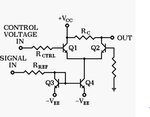sushl
Junior Member level 2
1)what are the applications of differential input
2)in digital signals how to find a pulse width,frequency
3) Design a circuit to count number of (on,off) pulses from a pwm
4) Draw the interupt vector table for an arm processor
Thanks for your valuable inputs in advance
Thanks & Regards
Sunil
2)in digital signals how to find a pulse width,frequency
3) Design a circuit to count number of (on,off) pulses from a pwm
4) Draw the interupt vector table for an arm processor
Thanks for your valuable inputs in advance
Thanks & Regards
Sunil



